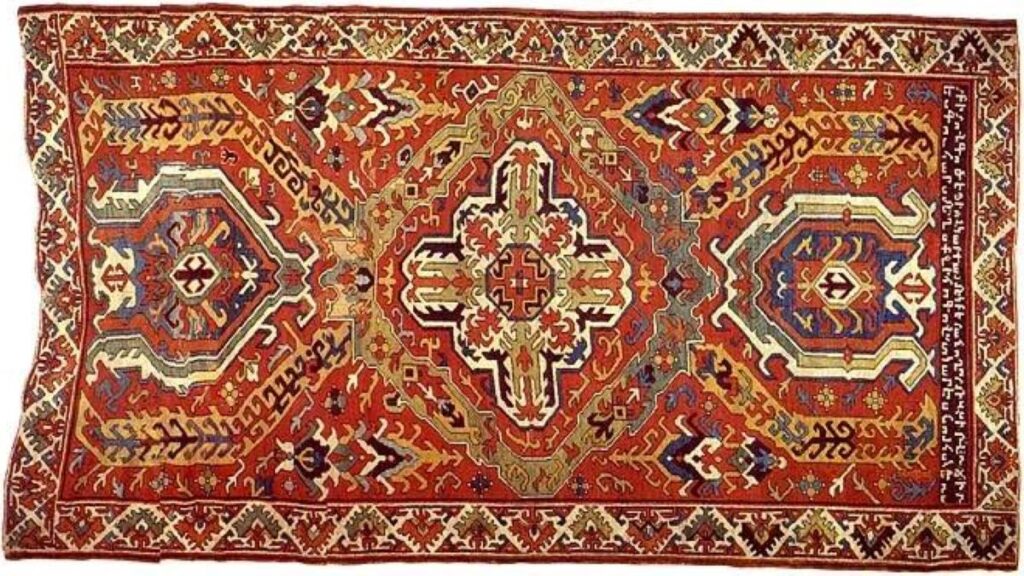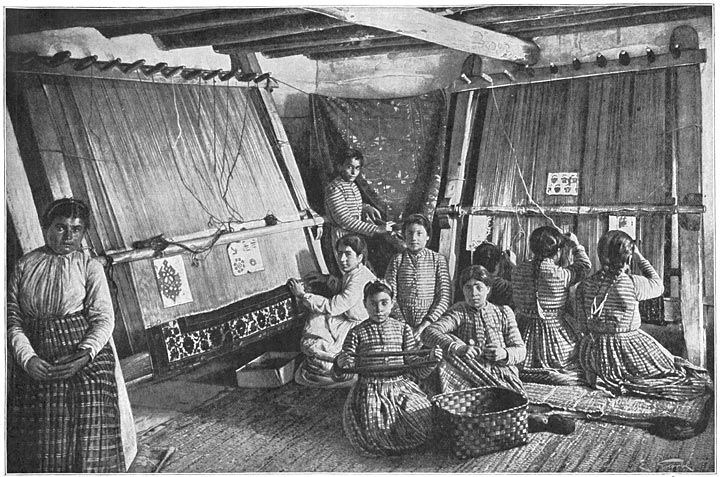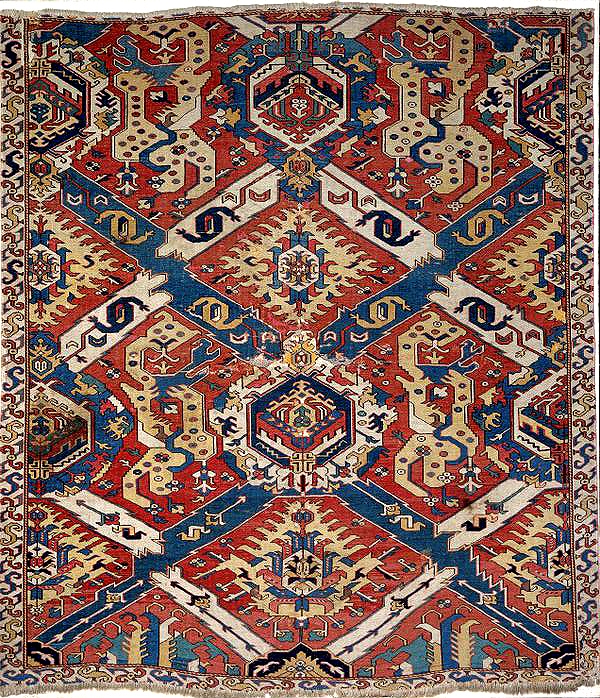Concise History of Armenian Rug Production
Armenian rugs are handmade carpets produced in the historical region of Armenia, encompassing present-day Armenia, parts of Turkey, Iran, and Azerbaijan. These rugs have a rich history and are globally recognised for their artistic beauty.
Ancient Armenian sources mention that rugs were used to adorn the floors and walls of 5th-century churches and describe their use during meals. Historical records, literature, and accounts from Greek, Persian, Arab, and Bulgarian sources note that Armenian rugs were given as tax payments, stolen, and admired since pre-Christian times. Interestingly, Arab sources refer to the supremacy of Armenian rugs, often considered the epitome of Islamic art. What’s remarkable in historical accounts is that Armenian rugs were not merely products of small domestic looms but the result of organised commercial endeavours that created vast works of exceptional beauty. A single rug could be 60 square meters!

The landscape of Armenian rug production shifted dramatically when the last Armenian kingdom of Cilicia, now part of southeastern Turkey, succumbed to the Egyptian Mamluks in the 13th century. This event triggered a mass exodus of Armenians to regions like Transylvania, Poland, Crimea, and Persia. Coincidentally, these areas saw a surge in advanced rug weaving, a testament to the Armenians’ ability to transplant their craft to their new homes. The Mamluk rugs of Egypt from this era stand as a significant example.
In the early 17th century, Persian Shah Abbas relocated approximately a hundred thousand Armenians from Julfa in Anatolia to New Julfa, situated outside Isfahan. He bestowed upon them a monopoly in the silk trade, leading them to establish thriving trading posts in India. This period marked the genesis of the remarkable Persian and Indian Mughal rugs. Concurrently, the renowned Polish court rugs, known as Polonaise, were woven in Isfahan and gifted to Polish royalty, which had a flourishing Armenian community of over a hundred thousand. Despite the widespread presence of Armenian rug-weaving, their contribution became obscured over time, reducing them to mere traders transporting rugs from their adopted lands to global markets.
Following Armenia’s declaration as the first Christian state in 301 AD, rug-making evolved into an art form with a distinct Christian identity. During the Middle Ages, Armenia emerged as a major exporter of rugs, reaching as far as China. This is evident in numerous Chinese medieval artworks featuring rugs with designs characteristic of Armenian rugs. The art of the Armenian rug during this period developed in tandem with Armenian church architecture and illuminated manuscript art, often sharing similar designs. The cross, in its various forms, became a dominant motif in Armenian rug designs.


In recent times, Armenian rug weaving has been primarily associated with rugs from the Caucasus and northwestern Persia, regions significantly populated by Armenians until recently. From the large rugs with the Caucasian dragon design of the 16th century to the French-influenced floral rugs made in Nagorno-Karabakh for the Russian aristocracy in the early 19th century, antique Armenian Caucasian rugs are as magnificent as they are diverse. Appreciated by collectors over the last half-century, these rugs are characterised by their bold designs, bright colours, and velvety wool.
However, the Armenian Genocide of 1915 led to a significant loss of history and talent in rug-making. Despite this, Armenians persevered in preserving their rug-making tradition. During the Soviet era, the rug-making industry was centralised, discouraging individual production and leading to the creation of uninspired, monotonous rugs. With Armenia’s independence and the fall of the Soviet system, efforts are underway to revive traditional rug production.
Armenia, rich in high-quality wool, has managed to preserve the art of spinning and weaving. Antique armenian rugs, known for their unique designs, patterns, and vibrant colours, often feature geometric motifs, floral elements, and intricate borders. The most common weaving technique is the double knot, or Turkish knot, which creates secure and durable rugs.
Antique Armenian rugs, recognised internationally for their high quality and artistic value, are sought after by collectors and art enthusiasts. Efforts to preserve and document these rugs have increased, especially as they become scarcer due to conflicts, displacements, and migration.

Figalli Oriental Rugs
We do not sell rugs. We bring rare works of art to your home in the form of rugs.
Our services
You are Protected
Copyright © 2023 Figalli Oriental Rugs, All rights reserved. Desenvolvido por Agência DLB – Agência de Marketing Digital em Porto Alegre
